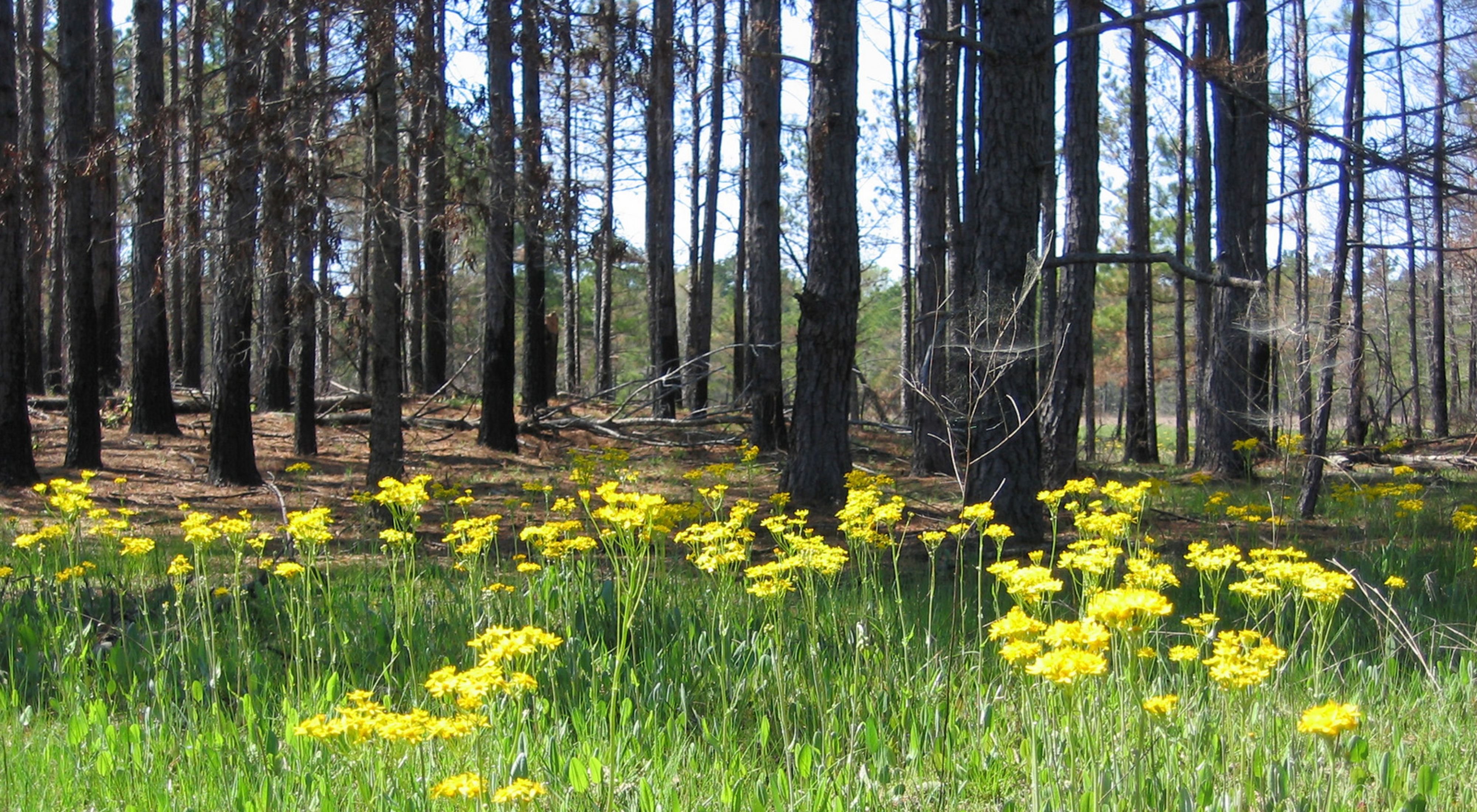Description
Kingsland Prairie is a mosaic of prairie-like openings interspersed with savannas and woodlands on a very unusual type of saline soil. The tiny geocarpon plant, listed as threatened under the Endangered Species Act, is found here, as are a number of other plants considered rare in Arkansas. At this site, The Nature Conservancy's emphasis is on ecologically compatible forestry: working with forest landowners to demonstrate the connections between ecosystem health and economic return.
Why TNC Selected This Site
Kingsland Prairie's saline soil habitat is extremely rare, making it a high priority for conservation. The unusual soil type—Lafe soil—is high in salts toxic to most plants, so most of the site was unusable for the pine sawtimber production that dominates the surrounding area. This fact made the site's transfer to conservation ownership a winning proposition for both TNC and the timber company that sold the land.
What TNC Has Done/Is Doing
The Nature Conservancy is creating a demonstration project centered on conserving the biodiversity of this priority site within the setting of a successful commercial timber operation. The staff is working with several experienced partners on managing a buffer zone around the preserve that will sustain timber production while conserving wildlife and rare plant populations. The project will test and showcase alternative techniques to promote native species in the understory and limit herbicide and sediment runoff into the preserve. Ecological restoration activities for the core preserve include prescribed burning, non-native species removal, and salvage of pines in areas where growth has been marginal.
By instituting a strong monitoring program, TNC will document the economics of the project and the ecological responses to the management regimes—building defensible, science-based data that demonstrate the feasibility of conservation-minded forestry.
